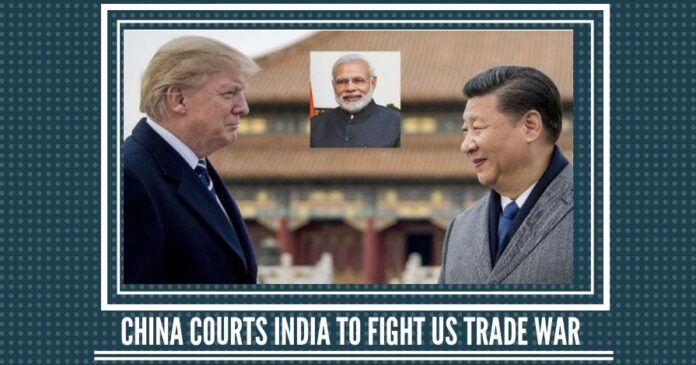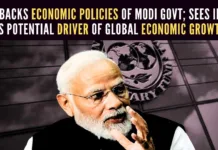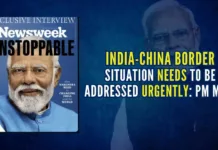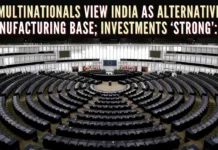
China has used its influence to marshal its friends and allies in an attempt to build a coalition to portray the US as the chief villain of the world
US sanctions against China seems to be having its intended effect. As pressure mounts, China’s change of stance is becoming more evident. According to recent reports President Trump and Chinese leader Xi Jinping are likely to meet at the G20 summit in Buenos Aires in November in an effort to work out a solution. But the meeting of the two leaders may not produce any dramatic resolution, given the tough stand of both the countries.
China’s strategy, on the other hand, seems ambiguous and is banking on flat defiance of the US as a measure of projecting its power
That the Chinese economy is bearing the brunt is in no doubt. Ford reported that its September sales in China fell 43% compared to the same period last year. This comes in the midst of a big slump in Chinese auto sales. The IMF, for its part, has already signalled the slowdown of the Chinese economy and put its GDP growth estimates for 2019 at 6.2%. Despite all the bad news on the economic front, Chinese leadership continues to put up a brave face.
The US appears to have its strategy cut out. Vice President Pence, in a hard-hitting speech at the Hudson Institute, unequivocally charged China with interfering in US elections and warned of consequences. In its 2018 National Defense Strategy paper, the US has clearly identified the two ‘revisionists powers – China and Russia’ as main threats. The paper goes on to further recognize ‘China’s military modernization, influence operations, and predatory economics in its efforts to coerce neighbouring countries to reorder the Indo-Pacific region to its advantage’ and perceives it as a long-term threat to US interests.
The series of events leading up to the new set of tariffs on Chinese imports as well as the subsequent pronouncements should leave no room for doubt about US intentions. If anything, it is clear that the US will not stop with just the trade war. It is only part of an overarching strategy to contain Chinese influence globally.
China’s strategy, on the other hand, seems ambiguous and is banking on flat defiance of the US as a measure of projecting its power. It has unleashed a massive propaganda campaign, particularly in the US media, in a determined bid to win friends. Not surprisingly, many pundits have opined on how the trade war with China is unsustainable and could hurt the US too. But all this may not really alter the situation on the ground which is firmly in favour of the US
It is worth pointing out here that following the Pokhran II nuclear explosions in 1998, many countries including China, Japan and Canada condemned India. China, for its part, was at the forefront, demanding international actions against India
On the international scene, China has used its influence to marshal its friends and allies in an attempt to build a coalition to portray the US as the chief villain of the world. In this context, it is indeed interesting to see that China has reached out to India, pontificating on the requirements of ‘a stable environment that will facilitate the growth of the two key economies’. In its attempt to win India to its side in its trade war with the US, it has called for the two countries to join together to bring about a ‘more just and reasonable international order’.
China’s change in tone and tenor – evident in its statements and diplomatic outreach – is only symptomatic of the severe stress on its economy and political leadership. There are also indications of a lack of cohesion amongst its leadership in responding to the US.
Many in India recall the often rancid and undiplomatic statements emanating from its foreign office during the Dokhlam crisis. But the very same establishment has now unleashed the equivalent of a diplomatic charm offensive. This only highlights the fact that the country is up against the wall in its bid to untangle itself from the costly trade war.
But India is no China in every sense of the word. Its economy is a not as big, nor is it as lopsided and heavily dependent on exports to the US for its survival. Secondly and most importantly, India is a plural democracy in the truest sense of the term and is in no danger of a systemic collapse if and when sanctions are imposed.
It is worth pointing out here that following the Pokhran II nuclear explosions in 1998, many countries including China, Japan and Canada condemned India. China, for its part, was at the forefront, demanding international actions against India. But now that the tables have turned, China has suddenly discovered the virtues of ‘regional economic stability and growth’ by working together.
China is expending its diplomatic resources in creating a mirage of a synergy with India out of a non-existent common cause
When the US did impose sanctions on India in May 1998 following Pokhran II, the country did not implode. The fact was that its citizens rallied together in support of the democratically elected government. But in China’s case, their leadership is acutely aware that prolonged sanctions could trigger internal unrest and rebellion that could easily threaten its structural integrity as a nation state.
Unlike China, India’s relationship with the US is on an entirely different footing. It has no overt or covert aspirations to unseat the US as the world’s superpower, nor does it have a confrontationist approach to it. But it is indeed true that, like China, India probably has a boatload of differences with the US, on issues ranging from trade to political and worldview. But that is par for the course betwixt democracies.
But at the end of the day, despite the differences, the US and India, as history bears witness, have resorted to bilateral discussions to resolve these issues. Unlike China, there is no public record of India threatening or confronting the US.
Being an authoritarian set up, China lacks that fundamental connect with the US or India. At a time when it is in serious trouble with the US, it cannot pretend a have a comradery with India since the latter too is ‘impacted by Trump’s unpredictable trade policies’.
Definitely, China is expending its diplomatic resources in creating a mirage of a synergy with India out of a non-existent common cause. The ground reality is that the leadership in India and the US are aware of the phoniness of this outreach by China.
In fact, India must – and there is ample evidence to think it has – see the speciousness of this argument. It cannot join hands with China to make a common cause. India’s worldview and priorities are different and dictated by New Delhi, not Beijing.
Misery loves the company and China’s outreach to India is definitely a case in point.
Note:
1. The views expressed here are those of the author and do not necessarily represent or reflect the views of PGurus.
- The dossier debacle – Pakistan in the doghouse - December 3, 2020
- Economic impact of COVID-19 – The hard lessons - May 25, 2020
- Will Financial Inclusion make India a US$5 trillion economy? - July 16, 2019











If the report is true, how strange is China’s expectation !
We espoused their cause for the permanent seat in the Security Council but how often have they supported India?
NSG,Hafiz,contests for SC seat for India,
intimidatory tactics at the border, brazen policy with regard to the role in aggravating Indo-Pak relations ……& so on.
Arm twist China to get out of CPEC, stop helping Pak and get UNSC seat.
Never give an inch to a china man lest he takes it by the yard. Basically they are double crossing pigs